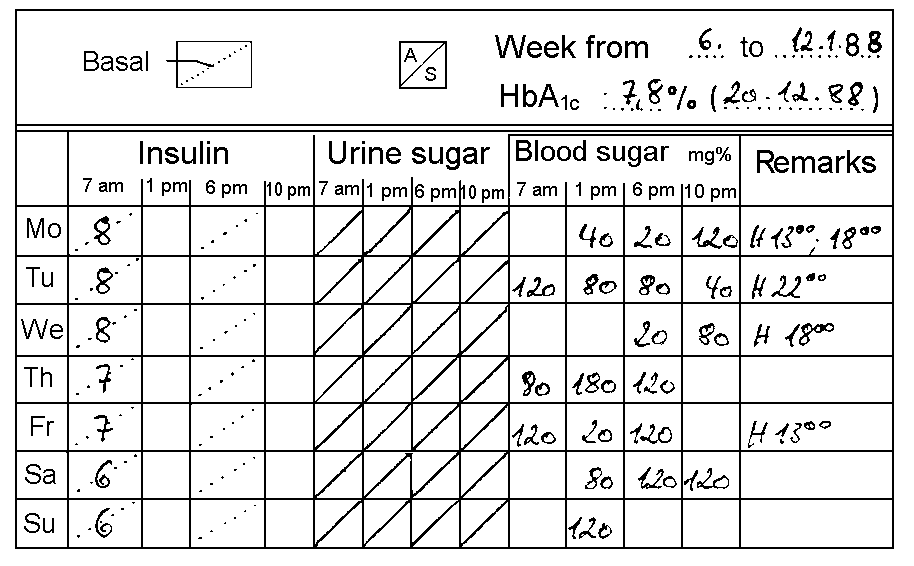The above logbook is an example of "tight" control. At the beginning of the week the patient was having an injection of 8 units of basal insulin once a day. There was no sugar in the urine. The blood glucose determinations show some tendency to hypoglycaemia. There were episodes of hypoglycaemia on Monday at 1 p.m. and 6 p.m. (blood glucose 40 mg/dl (2.2 mmol/l) at 1 p.m. and only 20 mg/dl (1.1 mmol/l) at 6 p.m.). There were further "hypos" on Tuesday and Wednesday.
On Thursday the insulin dose was therefore decreased to 7 units. Nevertheless, on Friday at 1 p.m. there was yet another hypoglycaemic episode: 20 mg/dl (1.1 mmol/l). The insulin dose was reduced still further by 1 unit to 6 units. You can also see how this child had been controlled from the HbA1c reading - 7.8%.
|
During the remission phase ('Honeymoon period') it is not difficult to achieve good diabetes control. The insulin requirement is less than half a unit per kilogram of body weight - i.e. the body is effectively quite sensitive to the effects of insulin. For a child weighing 20 kg that means less than 10 units a day.
'AIDA on-line' is not optimally configured to simulate the remission phase ('Honeymoon period') - but
click here to
simulate an example case using a similar type of regimen
|




